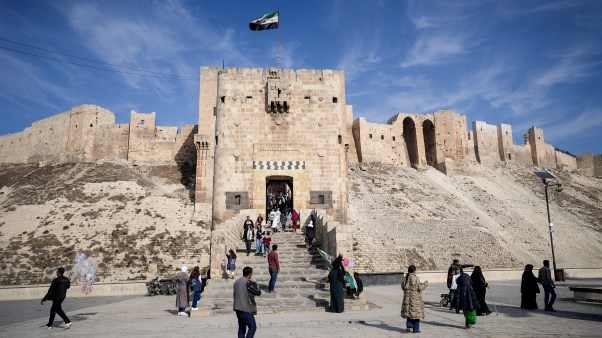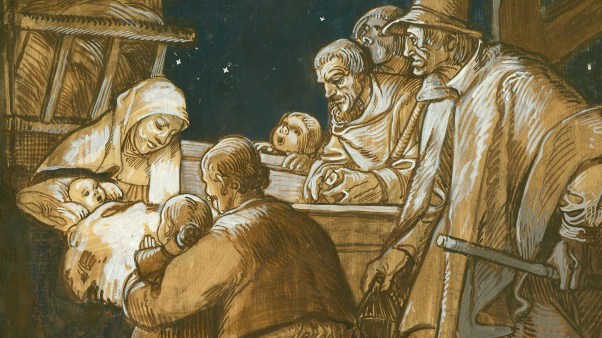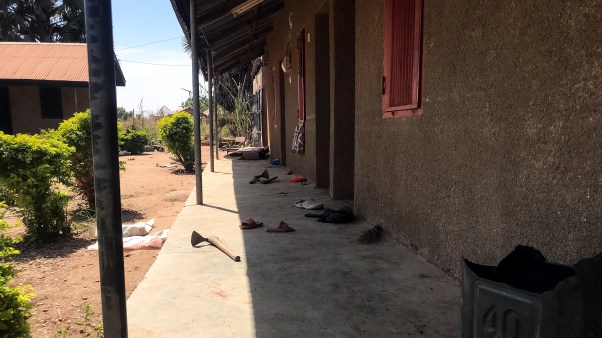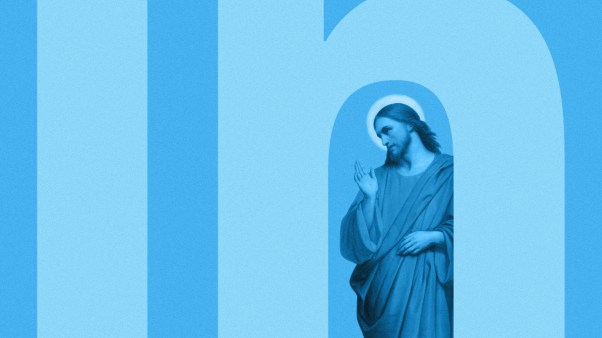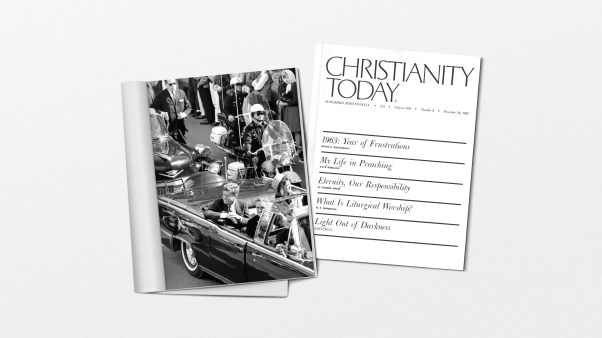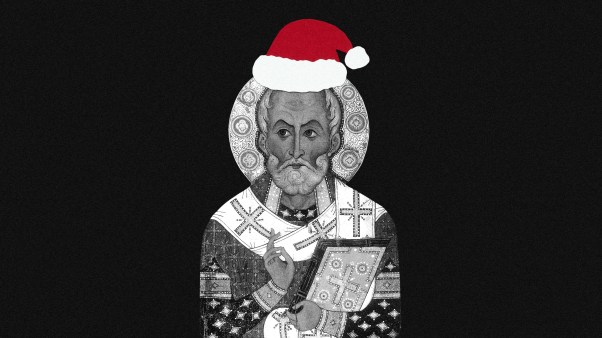E. B. White once lamented, “To perceive Christmas through its wrapping becomes more difficult with every year.”
I wouldn’t want to argue with the beloved author of Charlotte’s Web. Yet I have an affection for Christmas wrapping precisely because it helped me perceive Jesus through a fresh lens.
Several years ago, I decided to write a daily Christmas post on our church blog during the month of December. Saying something fresh about the Nativity every single day had me reaching far and wide for ideas. In my grasping, for one entry I decided to tackle the theology of Christmas wrapping. I vaguely recalled that some cultures use cloth instead of paper to wrap gifts, which sounded intriguing.
So I dug in. That’s when I first learned about the ancient Japanese art of furoshiki. Feudal lords needed a practical way to bundle their belongings while using the shogun bathhouse, and they displayed their family crests on the outer cloth to identify whose was whose.
Over the centuries, people adapted furoshiki into a beautiful means of presenting gifts. The cloth is folded and tied in deliberate, creative ways, inviting the recipient to pause and appreciate the thoughtfulness behind the packaging before opening it.
What’s more, unlike paper, the material can then be reused over and over again, which has made furoshiki a popular, eco-friendly alternative. When Yuriko Koike was the Japanese Minister of the Environment, she praised the benefits of furoshiki, saying, “It’s a shame for something to go to waste without having made use of its potential in full.”
I realized that Jesus came to us in furoshiki, wrapped in cloths. And while the strips of swaddling served their original purpose long ago, God continues to reuse those small pieces of cloth over and over again.
‘This Will Be a Sign’
The concept took a personal turn a few years later. It was the third Sunday in December, deep into the Advent season. At the close of the year, I was running on fumes, doing my best to muster up ideas for yet another Christmas sermon. But truth be told, after 15 years of preaching Christmas-themed messages, I felt nothing but thin, flat, and exhausted.
Part of the fatigue was due to internal battles. A few years prior to this, I had hit a mental and emotional wall that culminated with a diagnosis of Obsessive Compulsive Disorder (OCD). The label carries all kinds of preconceived notions and gets applied to a broad range of symptoms. But at the root of things, being told I had OCD simply underscored the reality that I was filled with anxiety.
OCD is sometimes referred to as “brain lock,” and that seems an apt description. My mind can get stuck in an endless loop around thoughts and fears that for most people would be easy to dismiss. And the energy required to manage my headspace left me drained.
I felt boxed in mentally, as if I were bound in one place and the world had closed in on me. I couldn’t express myself fully or freely. The tension and tightness I carried in my body reflected the constriction in my mind. The struggle was ongoing and at times immobilizing.
Thankfully, I was not alone in it. I had a wealth of incredible support, and I could function as needed. But I was suffering, exhausted, and stuck.
In my fatigue, I didn’t have a clue where to go for this particular sermon, what thread to follow. The only scrap of Scripture that had lodged itself in my brain was the angel’s line to the shepherds: “This will be a sign to you: You will find a baby wrapped in cloths and lying in a manger” (Luke 2:12).
Wrapped in cloths. That didn’t seem a particularly fruitful starting point. I could see why the sign mattered to the shepherds: That was how they would know they’d found the right baby. But it hardly seemed like a clue to help a congregation, or me, navigate life.
In fact, I had come to the theological conclusion that signs in general were not worthy of pursuit. After all, hadn’t Jesus criticized the crowds for wanting signs? Don’t signs lead to a misguided fascination with miracles and the inexplicable?
Nevertheless, I began to think about the rest of the angel’s message, the words he had spoken just before mentioning the sign. He said, “I bring you good news that will cause great joy for all the people” (Luke 2:10, emphasis mine). The good news, by his account, was for everyone. Could that good news include the sign he shared?
More specifically, was there a sign in there for me?
Tightly Bound
The practice of swaddling crosses cultural lines and can be traced to the earliest civilizations. Archaeologists have found tiny carved figurines of swaddled babies that date back thousands of years before Christ.
For centuries, parents believed that wrapping infants tightly in place helped their limbs to grow straighter. For a baby to be unswaddled suggested it was abandoned and uncared for (see Ezek. 16:4).
While it is popular again today, swaddling fell out of fashion in the 18th century, when physicians largely believed the tightness of the binding was not healthy. Babies need to be able to move somewhat freely for natural development. I knew from watching my own children that being surrounded by a snug blanket can provide a sense of security to an infant. But some studies suggest excessively restricting movement can distress a child and even stunt growth or lead to deformities.
It was new for me to consider this less pleasant side of swaddling. I can imagine Jesus in that manger, arms and legs straining against the unyielding bonds. What must it be like for a baby—particularly this baby, God incarnate—to be unable to move in any direction, held fast like a prisoner in a straitjacket? What must it have been like to have your world shrunk and narrowed so severely?
And here is where the light dawned in my darkness. This historical detail from Christ’s birth suddenly transformed into a personal sign for me. Because I no longer saw just a baby in a blanket, but a God who entered into my boundedness, who shared inside knowledge of all I was feeling. That was part of his gift to me, tucked away like hidden treasure in the folds of furoshiki, waiting to be discovered.
The conditions of his advent were a small metaphor for his entire life. As the Son of God became flesh and bones, he experienced an unfathomable limitation of himself. The universe closed in around him, restricting him with time and space (see Phil. 2:6–8). Having a human body was like being swaddled, as it contained Almighty God in unnaturally small dimensions.
When Jesus grew up and went to face his greatest ordeal, we’re given the detail that he was bound and remained bound from one trial to the next (John 18:12, 24). On the cross, nails took the place of the cords as his restraints, but they were not what held him to the cross. It was his willingness to remain there, fully immobilized on our behalf.
God with Us
At some point, each of us meets the limits of being human. It may not be through an anxiety disorder. Maybe it’s the stifling experience of a job where your best skills are never used. Or a broken family system from which you cannot extract yourself. Or past choices whose consequences still choke and bind. Or addictions you feel powerless to control. We all suffer the inescapable reality of sin and its fallout in this broken world. And we can relate to the psalmist when he described the cords of the grave coiling around him (Ps. 18:5).
The simple image of Jesus, God’s gift to us, being wrapped up in cloths comforts me with the powerful truth: He understands the bindings on my mind and soul as only someone who has a shared experience can. The concept of Immanuel, God with us, takes on a new and profound clarity.
Psalm 91:3 says, “Surely he will save you from the fowler’s snare.” It’s such a vivid picture of rescue, being released from a bird catcher’s trap. But notice what verse 4 says about how God does that: “He will cover you with his feathers, and under his wings you will find refuge.”
God becomes the bird himself, stepping into the trap set for us and saving us from the inside. He joins us where we are caught, subjecting himself to the confinement of being human. This is the heart of the gospel. And it was right there in the manger.
Even better, the manger isn’t the only time we find God in furoshiki. At the end of his earthly life, Jesus, our gift, was laid in the tomb, carefully and lovingly wrapped in strips of cloth.
However, this time around, the story ends with the image of the cloths being left behind in the tomb, set aside by the risen Christ. The gift is now fully ours, the wrappings discarded. He broke the power of the bindings that had held him in a death grip and emerged into complete and total freedom.
This is the hope that I claim as I reflect on the sign of the manger. It is no small thing that Jesus identified with us in his humanity, joining us in our confinement. I need a Savior who I know understands my struggles in such a personal way.
But it is a far greater wonder that he promises a glorious freedom from our own swaddling. The cloths will be set aside. As the restraints are beginning to loosen for me now, I look forward to the day we will leave behind all that currently binds. The day we can fully take in the greatness of the gift of God himself, no longer veiled by furoshiki of any kind.
That is still good news—the best news—for all the people.
Jeff Peabody is the senior pastor of New Day Church in Tacoma, Washington.
Was this article helpful? Did we miss something? Let us know here.



